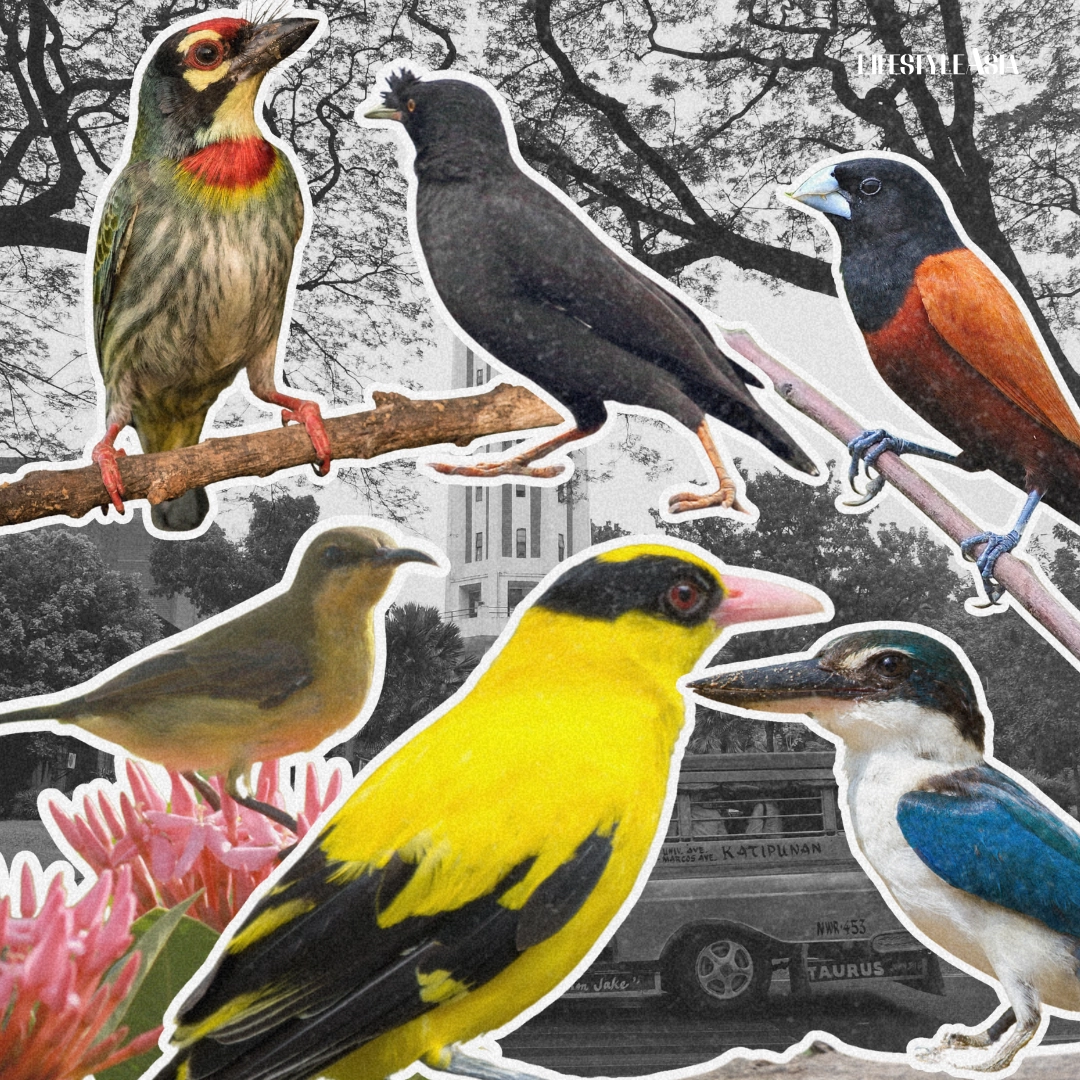Despite its dense urban sprawl, Manila is teeming with wildlife—including local birds that remind us of the country’s natural beauty hidden in plain sight.
Surrounded by Manila’s oppressive smog and concrete jungle, it’s hard to believe natural beauty could survive within the landscape. But as Jeff Goldblum’s Dr. Ian Malcolm says in Jurassic Park: life finds a way. You don’t have to travel too far to appreciate the wildlife that surrounds us—including birds. Watching our feathered friends has been a favorite, idle activity of mine for a while now, especially when Manila life gets hectic. Sure, it’s niche, but I’d argue it’s a form of meditation, too. It asks you to slow down and not take anything for granted, even on a stroll around the neighborhood or a trip to the grocery store.
I’m not saying you need to grab a pair of binoculars (though that would enhance the experience) and dress like Steve Irwin; the point of the exercise is to simply notice and observe. An empty nest, an odd sound in the trees, a flash of wings in nearby shrubbery. If you live in a neighborhood with even a few pockets of green, you’ll be surprised to find something extraordinary if you allow yourself to. And those few seconds of recognition, of truly knowing and naming another living thing, makes what would’ve otherwise been an average moment into something more meaningful.
So without further ado, I’ve prepared a small guide of 10 birds you’ll likely find in the city, and yes, I’ve seen all of them myself on different occasions. You might’ve bumped into them already—and now, you’ll finally have a name for the stunning wildlife that call Manila home, too.
READ ALSO: Get To Know The Rare Philippine Animals On Our Polymer Banknotes
Black Naped Oriole
Known locally as kilyawan, among other names, these bright yellow birds aren’t too difficult to find, once you know what to look or listen for. They’re not huge, but they’re not small either. You’ll likely spot them perched in tall, broad trees (which is probably why not many people notice them). They’ve got distinctive black markings, pink beaks, and a unique call: think laser beams in a sci-fi film. Don’t believe me? Have a listen to it in the video below. Flocks of them have woken me up on busy mornings, but I don’t mind—it’s nature’s strange but welcome alarm clock. So even if you don’t see them, you’ll at least hear them, if you listen hard enough.
Coppersmith Barbet
The coppersmith barbet looks like a colorful bag of gummy bears in bird form. Small and really quite cute, it’s the only species of barbet found in the Philippines. If you notice, many of our birds’ local names are onomatopoeic (a strong element of the Filipino language). The black naped oriole’s kilyawan sounds like its call, and in the same vein, this little barbet is called pok-pok for its steady, rhythmic vocalizations. Again, you’ll have to look a little higher up on the bare branches of tall trees, but if you spot this vibrant bird, the search would be well worth it.
Garden Sunbird
It’s not a hummingbird: these bird species are surprisingly unrelated, though they do share similarities. Garden sunbirds (formerly known as the olive-backed sunbird, a name that changed due to a taxonomic revision) are probably my favorite city birds because of how tiny yet nimble they are. They appear most often during the warmer summer months, flitting about and drinking nectar from flowers (and eating insects). Their gentle chirps sound like happy whistles, and it’s always a joy seeing them take their fill from the yellow bell tree in our garden (the blooms often attract pollinators). Just recently, a pair of them built a nest near my room from scraps of found material and plant fibers, taking turns to raise their noisy chicks, who all eventually left the home after more than a month.
Fun fact: in the bird world, females are usually less flamboyantly colored than males (what’s called “sexual dichromatism”). Both garden sunbird sexes have bright yellow feathers and the “olive” brown markings on their backs, though only the males will have that eye-catching, metallic blue color on their throat area.
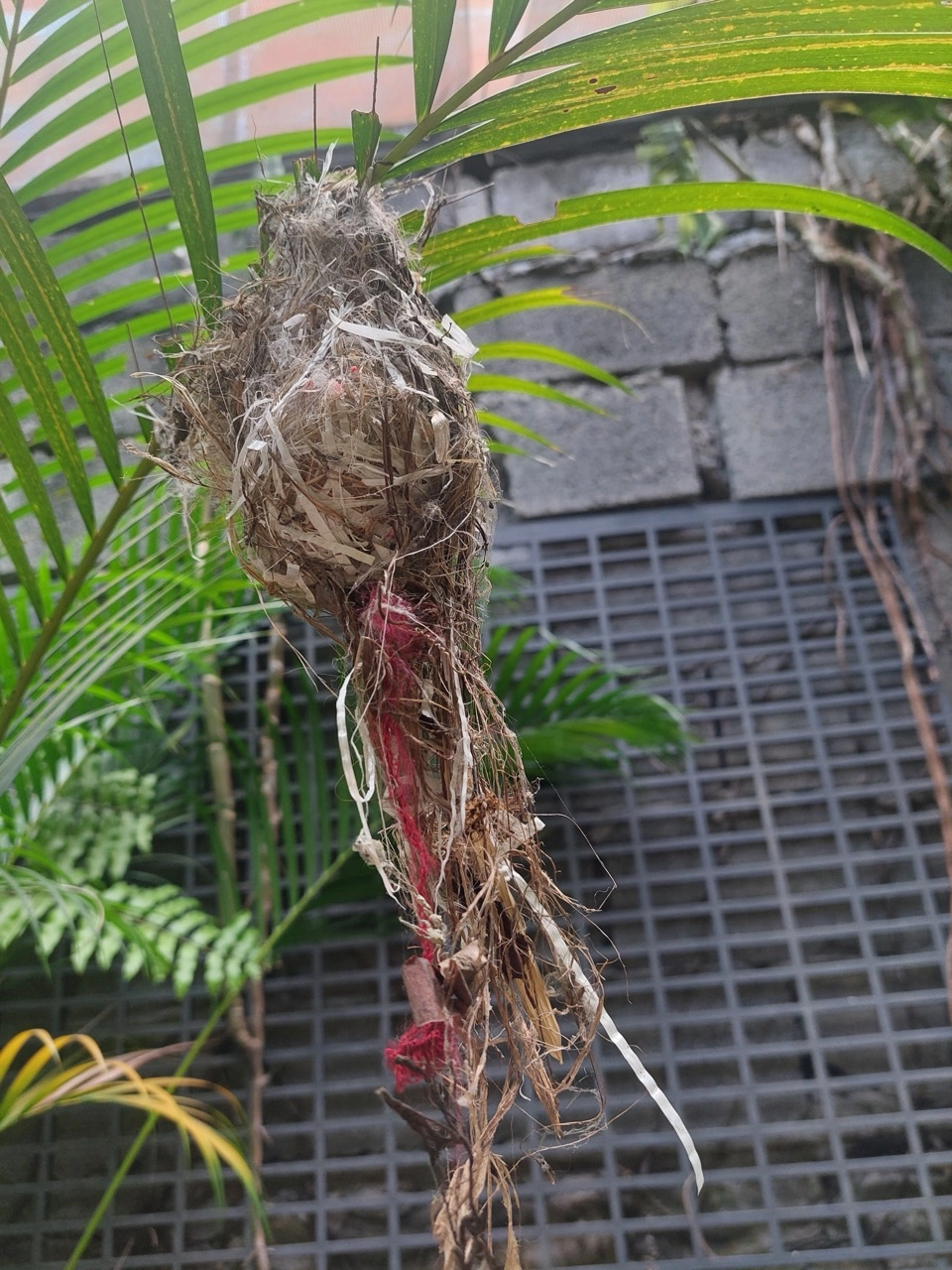
Zebra Dove (Bato-Bato)
I’m willing to bet you’ve seen one of these little guys at least once in your life. They’re those strange birds that look like pigeons, but much smaller, unafraid of the human activity around them as they bob their heads and amble about, only flying short distances when startled. Known as bato-bato, they’re actually zebra doves. Their local name is not only a reference to their grey, speckled feathers, but also their ability to stand still and…well, in our terms, live their lives completely unbothered, which is what we all hope to achieve. You’ll likely see them on your neighborhood sidewalks or grassy areas, foraging the ground for small grass and insects to munch on.
Eurasian Tree Sparrow
This bird is, to my mind, the most common Manila-dweller you’ll find. Most Filipinos call them “maya,” mayang bahay, mayang simbahan (as they’re often found roosting in churches). The term “maya” is actually a folk taxonomy within the Philippines, one that refers to different passerine birds (those that perch and possess four toes, three forward and one backward) made up of sparrows, finches, and munias.
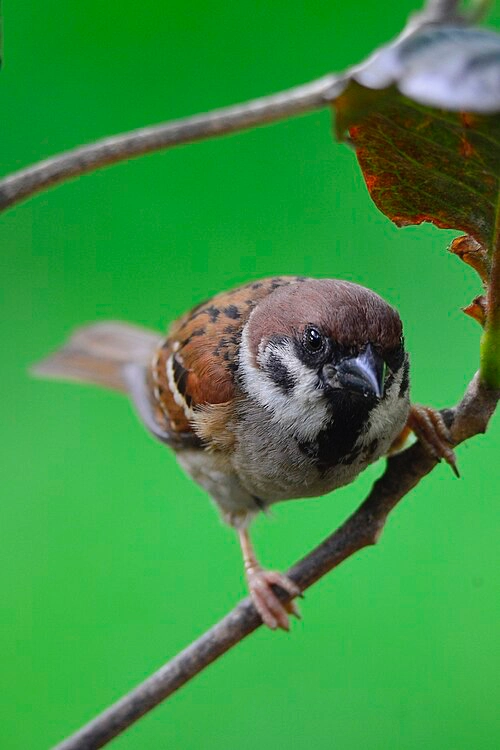
You’ll see these sparrows hopping around your home gardens, on the lines of electric posts, and around the sidewalks of busy central business districts, their ubiquity being proof of their overall resilience and adaptability. Yet funny enough, they’re not native to the land, having been introduced to the islands long ago, possibly through trade routes from mainland Asia. Even if you struggle to spot the other birds on this list, rest assured, this little sparrow will remain a constant in our bustling city.
Chestnut Munia
Here we have another “maya” (though it’s a munia, not a sparrow), called mayang pula for its red-brown feathers. The small chestnut munia is pretty easy to spot, thanks to its dark head and the silver beak that stands in stark contrast to it. They’ve got a high-pitched trilling sound, and often travel in groups. In my neighborhood, I usually see them in patches of wild, untamed grass, eating seeds as shown in the photo below. And here’s another fun fact: before the majestic Philippine eagle took its spot as the country’s national bird, it was this small chestnut munia that held the title until 1995, as the National Museum of the Philippines details.
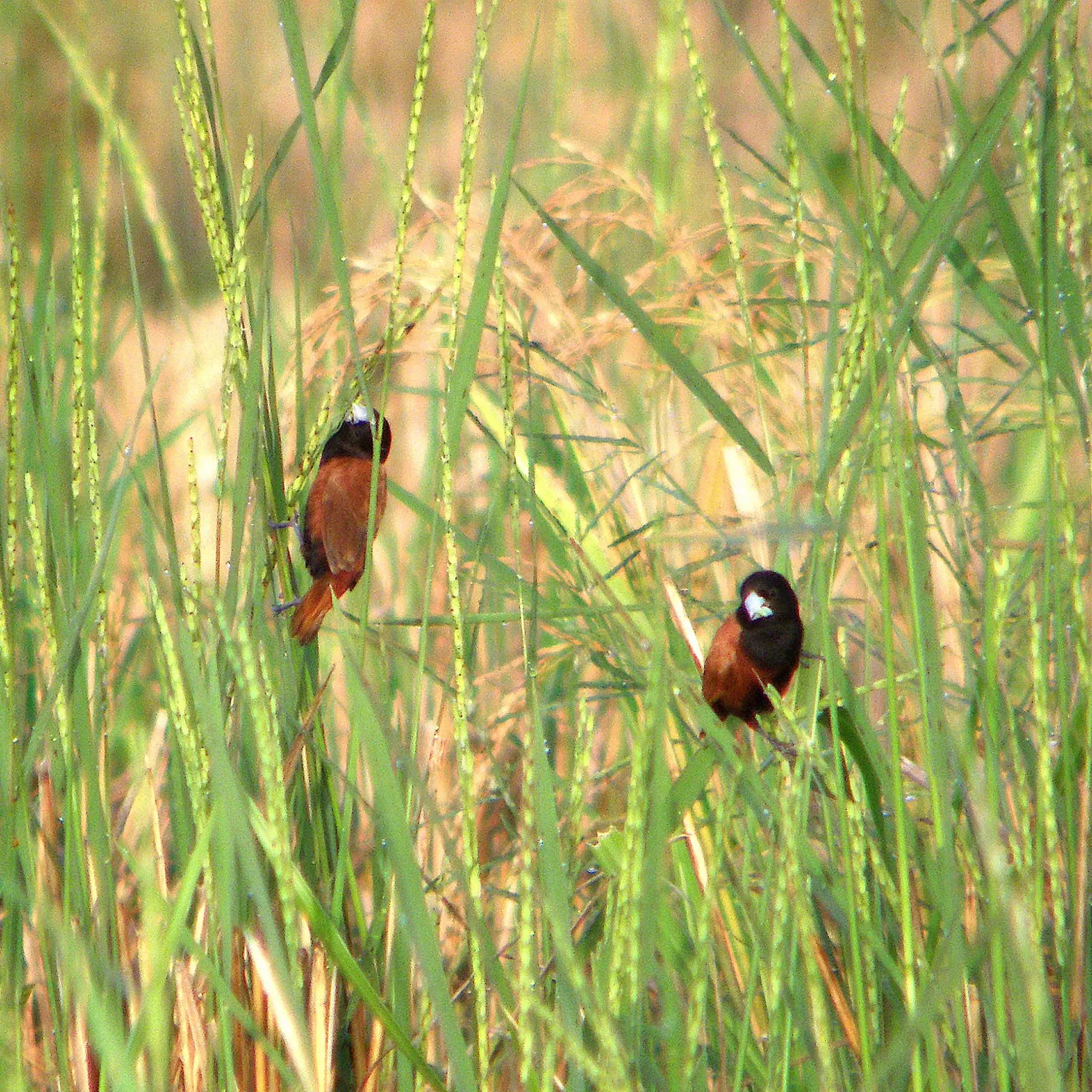
Yellow-vented Bulbul
The yellow-vented bulbul is another common city bird, which you can easily spot through the yellow marking beneath its tail (the “vent,” hence its name). You might also notice a slightly elevated crest on its head, which resembles a mohawk. Also known as kulkul or luklak, you’ll often find them perched on trees, eating tiny fruits and insects. In our neighborhood, I usually see them eating the berry-like red fruits from the Manila palm tree (Adonidia merrillii), which are actually one of their favorite snacks.
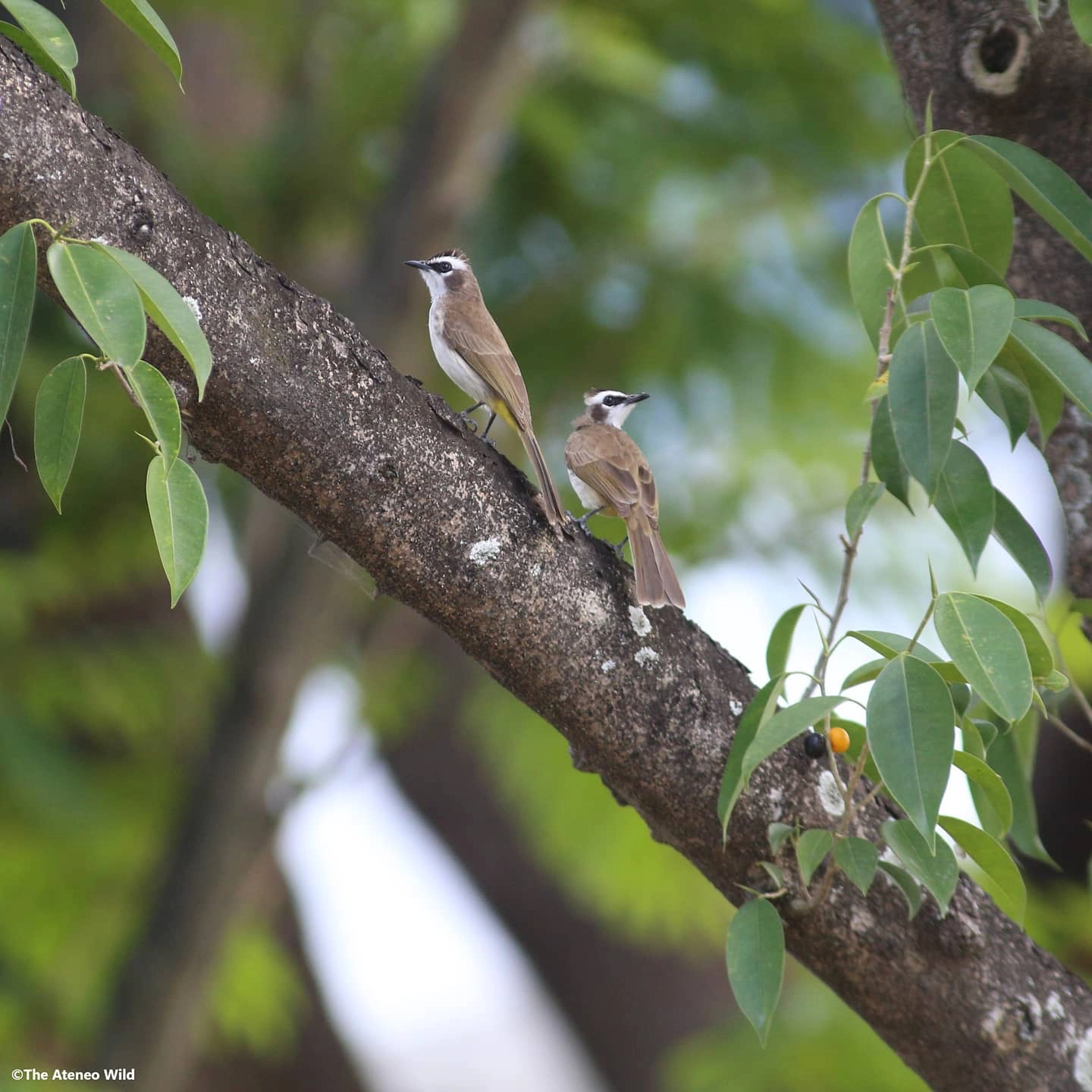
Philippine Pied Fantail
Also called “Maria Capra,” the Philippine pied fantail is also a fairly common city dweller, hard to miss with its namesake long and fanned tail feathers. But don’t be fooled by its cute looks: this bird can actually be pretty territorial, especially when animals and humans venture close to its nest, and may even attack or dive bomb when they feel like they’re under threat. Though in most cases, there’s nothing to fear when you watch them from a safe distance. One used to visit our garage quite often, attacking its own reflection on the car window, likely thinking it was another rival (as they say, you’re your worst enemy)—which is a pretty hilarious indicator of how spunky these birds are.
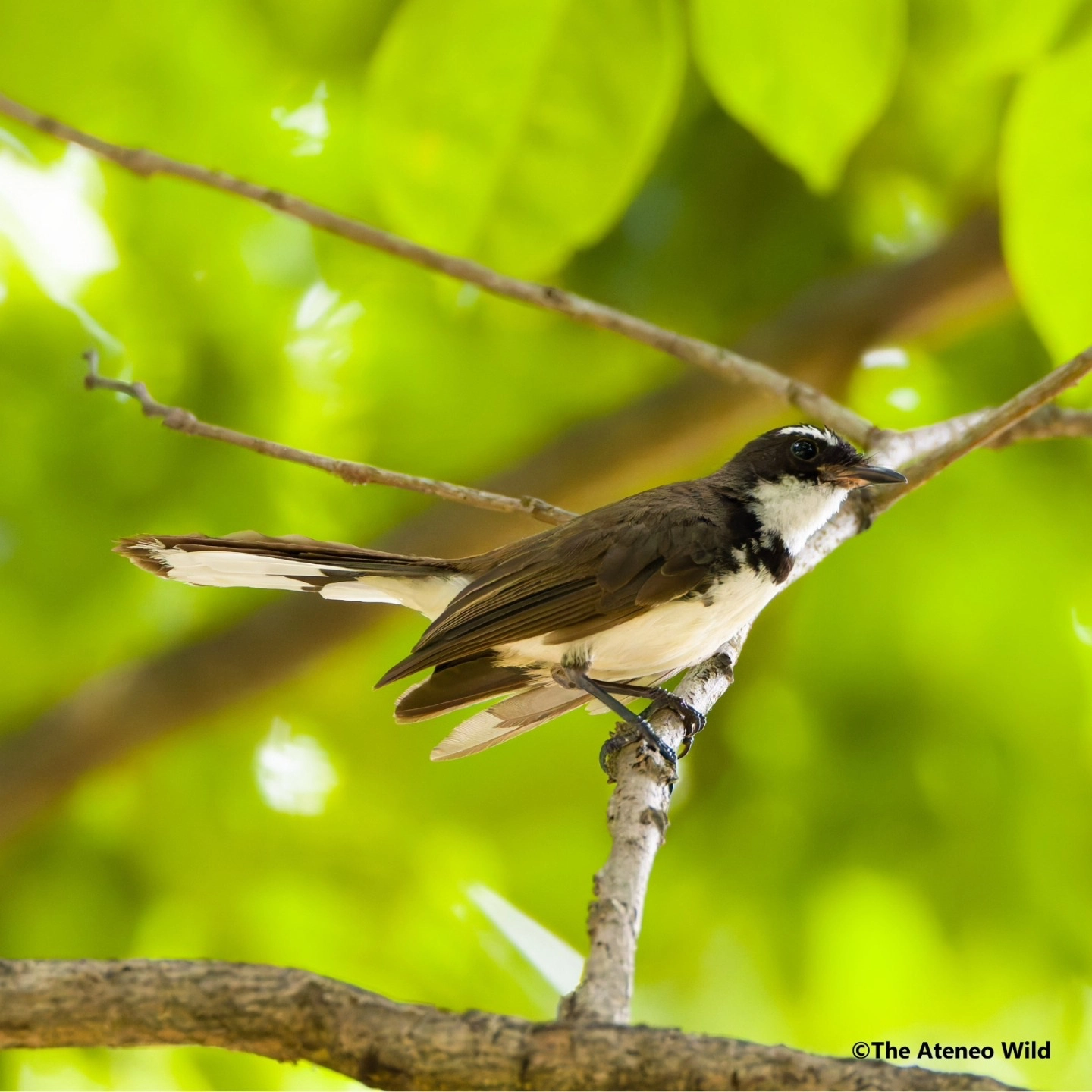
White Collared Kingfisher
Yes, we do have kingfishers in Manila! Perhaps the most visually striking bird on this list, you’ll immediately notice its blue-teal plumage, as well as the white “collar” on its neck. This kingfisher is considered a non-endemic species, meaning they can be found in other parts of the world but aren’t migratory, spending most of their lives (from egg to death) within the Philippines. Found in both coastal and urban areas (usually near bodies of water), these birds have a wide diet consisting of everything from fish to small crabs to grasshoppers and even small lizards or snakes. I spotted one perched on a tree overlooking a small pond, likely hunting for something to munch on. They’ve also got a recognizable call, which you can listen to here.
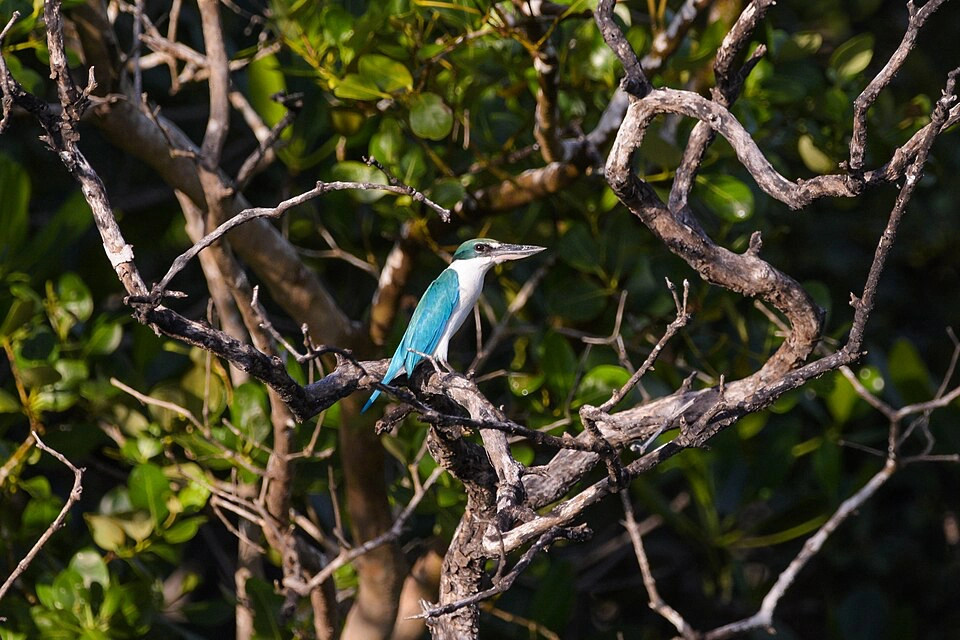
Crested Myna
The crested myna actually doesn’t originate from the Philippines. China introduced the species to Luzon in the mid-1800s, though these birds didn’t hesitate to make themselves at home. Like most urban species, they’ve found ways to adapt to city life, scavenging for materials to build their nests atop trees and even hobbling on the ground in search of food. The crested myna, and other birds in the myna group, are capable of high-level mimicry, some even imitating human speech. You’ll hear them release a wide variety of sounds, from whistles to something that sounds like a car alarm.
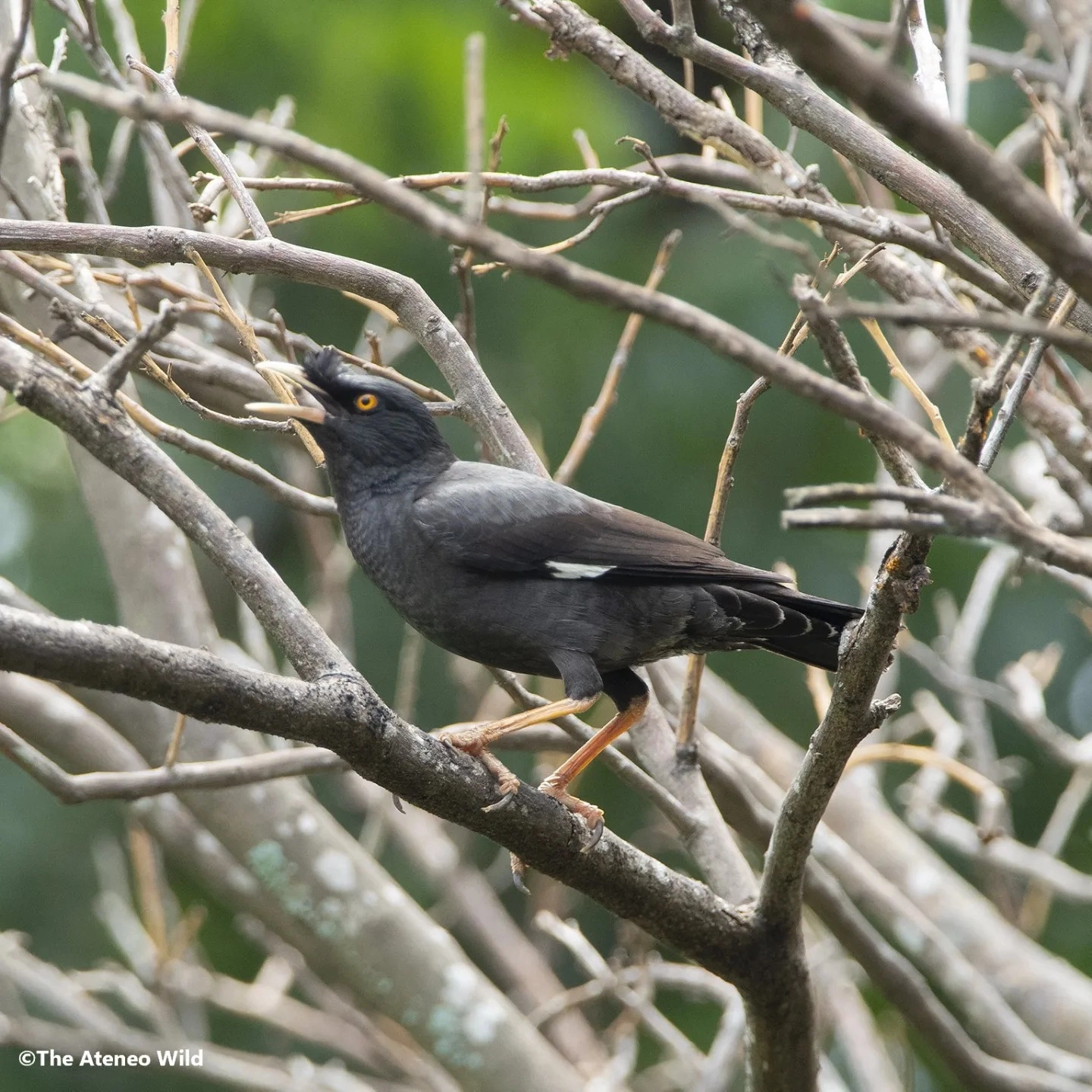
The first time I spotted one in my neighborhood, I couldn’t believe what I was seeing: it was waddling on two bright orange legs, standing almost human-like, that distinctive crest on the base of its beak (a tuft of feathers) as it navigated a grassy plot of land. You can’t help but feel a sense of whimsy when you see these birds: they’re quite silly looking, to put it simply, and a whole lot of fun to watch.
